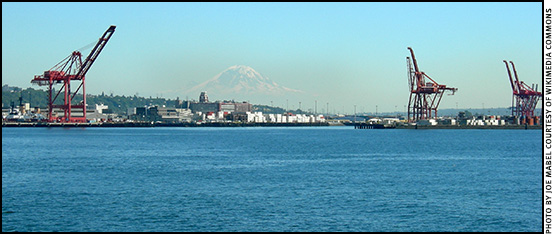
In The Cattle Markets
West Coast port problems a concern for the meat industry.
A contract dispute between the longshoremen’s union and the companies that operate some of the country’s busiest ports on the Pacific Coast has lately started to get the attention of the meat industry. This is not a new issue. Contract renegotiations between the two parties began last May. The Pacific Maritime Association, which represents the companies operating the port facilities, contends that a work slowdown by union members has been affecting business since October.
Indeed, anecdotal accounts of major disruptions to trade in certain sectors began to surface last fall. For example, Christmas tree growers in the Pacific Northwest largely missed out on the Asian market this Christmas due to shipping delays and cancelations. Washington state apple growers also reported serious bottlenecks in the flow of exports to Pacific Rim customers during their crucial harvest-time market.
More recently, the port slowdown has become a major concern for the pork sector. This is not too surprising. West Coast ports are the primary point of departure for containerized shipments to Asia. Data for 2012 (most recently available) from the U.S. Department of Transportation Maritime Administration indicate that the ports most directly affected by the ongoing labor dispute (Long Beach/Los Angeles, Oakland, San Diego, Portland, and Seattle/Tacoma) together handled more than 40% of all U.S. container exports. These ports also handled more than 50% of container imports, handling a large share of the consumer goods coming in from Asian trading partners — notably China, of course.
Without a doubt, these West Coast ports are in an ideal position to handle all manner of goods going to our trading partners around the Pacific Rim. These countries, incidentally, include some of the United State’s largest customers for beef, pork and poultry. In 2014, in terms of beef export value, Japan, Hong Kong and South Korea ranked first, third and fifth, respectively.
In terms of pork export value, Japan, China and South Korea ranked first, fourth and fifth, respectively. Finally, for poultry export value, Hong Kong and China ranked third and fourth, respectively. U.S. Meat Export Federation (USMEF) personnel have noted that as much as 78% of waterborne beef and pork exports go through these West Coast facilities.1 Clearly, the potential exists for disruptions at these ports to become a serious problem for meat exports.
As wholesale meat prices have steadily eroded during the last few weeks, attention has begun to focus on the role that export delays may be playing in weakening price support. Last Friday, the pork cutout worked out to $72.94. As recently as mid-December, the pork cutout was in the low-$90s.
Wholesale beef prices have held up somewhat better than that. After bouncing back to around $263 in mid-January, the Choice boxed-beef cutout dropped back to $239.08 last Friday. Of course, there is much more going on in the market than a labor dispute at the ports.
Production is increasing, oil prices have shown signs of rebounding and the dollar has strengthened sharply against other major currencies. These factors have contributed to a less-supportive fundamental environment for meat and livestock prices — quite apart from anything happening at the West Coast ports. However, given the importance of Asian markets to the entire red meat and poultry complex, disruptions at our ports are certainly worth paying attention to.
If foreign buyers find that shipments of U.S. product have become unreliable or that shipping costs through alternative ports on the Gulf or the Atlantic are too high, they may forego placing U.S. orders at all, sourcing product from other suppliers. Delays in shipments could also raise concerns about product quality. This could make buyers especially reluctant to source chilled product (typically a higher value than frozen product but with a shorter shelf life) from the United States.
Similar concerns over product deterioration were reportedly major problems for the Christmas tree and apple industries mentioned earlier. As of early this week (week of Feb. 9), the pace of shipments was reported to be getting back to normal; however, the contract dispute and the uncertainty that it is generating have not yet been resolved.
Editor’s Note: John Anderson is the deputy chief economist for the American Farm Bureau Federation.
1For those willing to purchase it, the U.S. Census Bureau collects data on export shipments, reporting the port of exportation, 6-digit Harmonized Schedule B commodity code, country of destination, method of transportation (air, vessel and containerized vessel), value and shipping weight.






